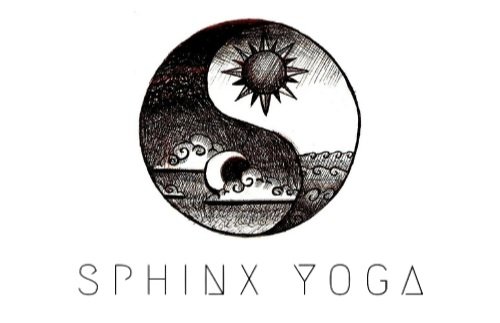Ujjayi Breath
🌀UJJAYI🌀
Nerd alert 🤓
Since we work with ujjayi breath so much in our yoga practice, it's helpful to have a solid grasp of the what, how and why of this breathing practice. There is not always time to go into a full exploration during a studio class so here's a bit more detail for you. Skip to the end for benefits
WHAT?
Ujjayi breath is breathing with an oceanic sound rolling in and out with the breath. Ujjayi is translated in slightly different ways including 'victorious uprising', 'upwardly victorious' and 'victory over'.
HOW
- Take one hand in front of your mouth and as you breathe out through the mouth imagine your hand is a mirror you are trying to steam up. Slightly constrict your throat to make a 'haaa' sound
- Try to inhale keeping this gentle constriction and creating a similar sound
- When comfortable, start taking the inhalations through your nose, seeing if you can keep the gentle constriction and ocean like sound, continue to exhale through your mouth
- Move to both inhale and exhale coming through the nose
- Over time work to even out the inhale and exhale so they take around 4-6 counts each (5.5 seconds and we start to tap into coherent breathing which is a whole other post!)
VARIATIONS
- When beginning with Ujjayi it can help to make the breath pretty loud so we can get familiar with it and focus more easily. Over time, finding a gentler sound can support tuning into the subtler aspects of our practice. Next time you practice, why not play around with making louder and quieter ujjayi breaths and explore the impact. I find Darth Vader level can be great if I am doing a tricky asana and struggling to keep a steady breath! Through the rest of my practice I am often trying to find a balance of a strong, steady breath with a subtle sound (different teachers have different things to say about this so it's really important to explore for yourself). Krishnamacharya reportedly advised that ujjayi breath be soft in your throat with an oily texture
- Bringing the bandhas into the practice can increase the benefits of ujjayi. In simple terms of our physical body (annamayakosha) this might entail letting the pelvic floor/hammock relax down as you inhale and gently draw in and up as you exhale, with the diaphragm reaching down as you inhale (pushing the belly gently out) and up as you exhale (drawing the belly gently in) - I like to imagine the diaphragm like the parent jellyfish and the pelvic hammock as the baby jellyfish bobbing up and down in rhythm together! During stronger asana you might move to rib cage breathing, with the diaphragm moving outwards and back to centre rather than up and down (see previous post on diaphragmatic breathing variations)
WHY?
The sound of ujjayi helps us develop and sustain our focus (dharana)
The constriction at the back of the throat massages part of our vagus nerve, which is the central player of the parasympathetic nervous system, helping us stay grounded and relaxed even through more challenging parts of our practice. The sound is also gently soothing
There is a ton of research showing that yogic breath, and yoga practices that focus on the breath, lead to a myriad of benefits including lower blood pressure, improved sleep, reduced depression and anxiety, improved PTSD symptoms, reduced stress, improved motivation, better body confidence, improved circulation and general better health
Ujjayi breath can support a deepening into meditation as it supports us to focus on present sensations. Whilst it calms the nervous system, it also heightens our awareness, supporting us to open up to intuition and inspiration (expanding beyond the contraction of the self-storying that the monkey mind can so often get tangled up in).
Working with ujjayi empowers us to have a say over how we feel and think!
🖤
